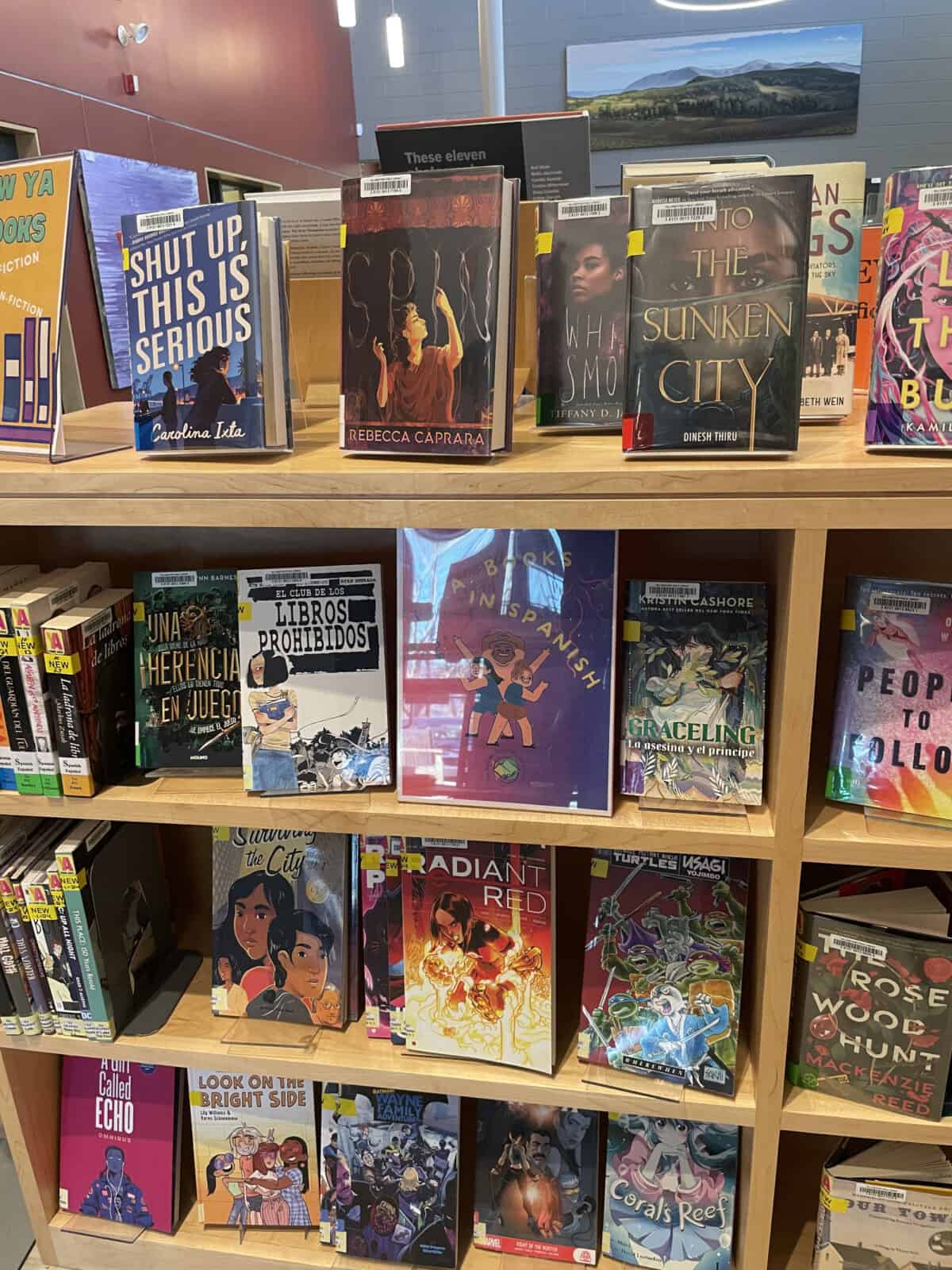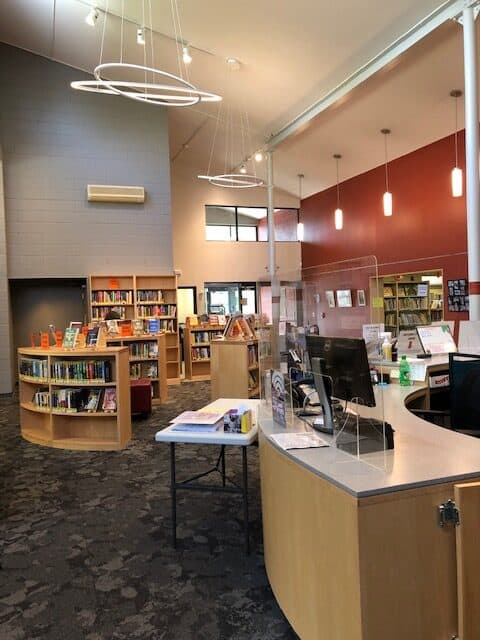In 1894 the first book in the handwritten shelf list is Walt Whitman. Anyone with a library card could read poems like Leaves of Grass.
In 1874, you might have been more likely to find Edmund Morris’ Ten Acres Enough.’ When the Williamstown public library first opened to the town, it began with a collection of 100 agricultural books in a corner of H. Cole’s General Store.
This spring library will celebrate their 150th year, said Interim Director Kirsten Rose, with an open house on March 9 as the library’s newly chosen executive director, Angela Zimmermann, steps into her role on March 11.
Living stories
Williamstown’s Milne Library will hold events through the spring to commemorate their 150th year, including a series of films joyfully celebrating the power of a good story, a book conversation on Jorge Luis Borges’ story The Library of Babel, a staged reading of Karen Zacarias’ Book Club Play and more.

Welcoming and brightly colorful shelves of books face the entrance at Milne Library in Williamstown.
Celebrations will continue into the spring, said Judy Ensign, a Friends of the Library volunteer and the guiding force behind the the anniversary planning. The library and local organizations are offering films honoring books, events through April and May, art and history at the Clark Art Insititute and Williams College’s Sawyer Library.
On April 16, National Librarians Day freelance writer and book discussion group leader Julie Mackaman and Williams College profesor Gene Bill-Villada will lead a book talk on Jorge Luis Borges’ story The Library of Babel.
In their curiosity and playfulness and range, the celebrations reflect the library’s ever widening place at the center of the town, Rose says — a library exists to serve the community around them and to teach, to hold up a mirror where people can see themselves, for comfort and enertainment, introspection and empanthy, and to open a window a wider world.
She has found the original minutes from the town meeting that approved the forming of the new library. They confirmed funding and support from the town and named the first five trustees, she said. Three of them women, by intent.
Those first hundred books came from the collection of Joseph White, a Williams College alum and the college treasurer. He was gathering resources for the local farming community, said Ensign, who has researched library history through local archives as she imagined ways to recognize its past and present.
(The college had its own library then, recently built in the brick octagon that is now the Williams College Museum of Art — but according to former Williams professor Fred Rudolph, most of the books on campus addressing current events of the day, science or contemporary fiction college belonged to the students themselves.
Student groups had their own libraries. As tensions grew before the Civil War, students also brought Ralph Waldo Emerson to Williamstown, but the college claimed he was too radical to speak on campus …)

Curved shelves hold new fiction in the open first room of the Williamstown public library.
By the time the town library formed, 1874 was the Reconstruction. Spring Street had a home for Civil War veterans, and an active Black community had lived for generations on and around White Oak Road.
And this was industrial Williamsown. Mills were active along the Hoosic and Green River — a grist mill, a tannery, a cheese factory … hills deforested up to the summits, even on Mount Greylock.
Whitman could have taken a train up from Brooklyn. If he took the trolley or rode the dirt roads downtown, he could visit a blacksmith, a bookstore and an ice cream parlor, an opera house and public baths (before the college dorms had their own).
By 1894, the library had grown into hundreds of books, and spilled out of its corner into its own room in the general store … and then into its own building. And the library has kept growing. Today the librarians care for a collection of more than 53,000 books — and more than 270,000 including digital books and materials.
Librarians have faced the same challenge for generations, Rose says. As tens of thousands of new books are published every year in the U.S. alone (not to mention magazines, newspapers, digital media and more), she curates a constant flow, bringing in new books and sorting through old ones — and they are always facing the challenge of having enough space.
She can remember, from her own college days at Williams, the library in its former location in the Botsfort House. She remembers the curving central staircase and piles of books as the collection spilled over the shelves.
By 1941, the library had moved into the 1796 historic house just across Main Street (Route 2) from Water Street (Route 43), and by 1996 the collection had grown until they moved into their current home in the old Pine Cobble School building beside field park.

Williamstown's Milne Library celebrates its 150th birthday in early spring.
And the collection has expanded in digital space, like the quantum labyrinth in Borges’ story — in online resources, in virtual and real in community spaces and gatherings, and in physical regions.
As Zimmermann, the newly welcomed executive director, plans for the future, she has already proposed a new library of physical things … as earthy as a trowel.
And so in a way the library may have come full circle. Today some Berkshire libraries are offering seed libraries and tool libraries. And at the Berkshire Athenaeum, you can check out a packet of northeastern wildflower seeds to sow in early spring.

